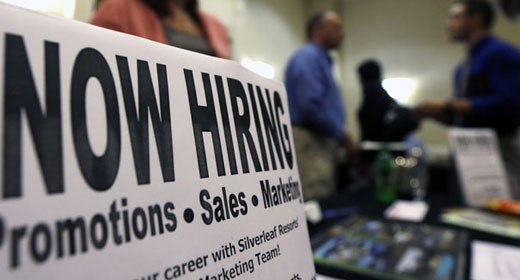
Here the big question on the minds of most working people I talk to: is the talk of economic recovery from the 2008 depression BS? or for real? The latest November and December jobs reports has some claiming victory over the depression.
Of course, the answer to that question is found in part by understanding how we got into the miserable shape we are in, with miserable prospects clouding nearly every window to the future. I am not saying there are no classic middle class success stories still being told. But there are lots of low-wage service jobs, compared to some middle-income “fracking” (hydraulic fracturing), and some middle-income tech and financial service jobs in the growth list.
Fast food jobs are OK if you can keep living with parents and relatives. Not so cool for single mom with kids. Not so cool for anyone, especially young Black men, with a bust of any kind. Folks are still going to college in fairly large numbers, but we are not making nearly the education and other human capital investments today we made proportionally in the 1950s and 60s. Even those attending college today are incurring unpayable debts and often not finishing if they are from the hollowed out lower two-thirds of the population.
There is hardly any family, even the ones with some success stories, that has not felt the impact of longterm joblessness within their own household, or among close family and friends. Tracking median income is the best shorthand way to see if workforce as a whole is rising, or falling. The only areas where median incomes are now rising are fracking areas. In central Pennsylvania, there is a crisis in dropouts from community colleges because the only good jobs are in fracking, where many of the occupations do not require degrees.
Everywhere, the inequality squeeze is pervasive. Everyone is starting to see it. The poverty is in your face in working-class communities. The neglect of seniors and children, the racist, anti-democratic and hysterical political extremes and provocations are like sulfurous social smog. Karl Marx may not have gotten everything right. But the world we seem to be living in now, the “two New Yorks,” the “two Americas,” confirms a persistent and recurrent tendency toward class conflict of a kind pretty close to Marx’s original descriptions of capitalism.
Even when democratic and social-democratic and socialist rebellions repress and try to stabilize this tendency for periods, capitalism’s natural rhythms in the circulation of commodities and money always threaten a return to this wretched “equilibrium” that the 1 percent is offering us, and from which fate we are now struggling to escape: an equilibrium where a few clip coupons and rake in rents, on yachts, while all others labor to provide them with toys and pleasures.
Many have touted the job numbers in the latest government reports, including some prominent liberal commentators, as evidence that the economy is indeed recovering. Official unemployment has declined to 6.7 percent. There was job growth in nearly every sector, including exports, in November. December’s report, although it shows a decline in the unemployment rate, had very weak job growth, with only 75,000 new jobs created! Workforce participation fell sharply. Market Watch nonetheless called the reports “shockingly strong.”
Personally, the confusion of the statistics in the wake of the fall government shutdown makes the numbers very squishy and hard to interpret. But regardless, there is no reason to believe that what some economists are calling recovery is a return to even 2007 conditions, incomes, wealth and prospects. It’s not. The depression is not over. The economy and the social institutions it sustains suffered serious damage that has not been repaired. The correct therapies were not and are still not being fully applied due to right-wing billionaire power.
Further, economies are dynamic, arguably organic, systems, which are always engaged in not just production, but reproduction — creating the infrastructure and human capital of its future. The reproduction side is in a state hard not to describe as crisis: huge challenges in health care, education and infrastructure confront nearly every state. Note there are business cycles of growth and contraction even within a depression. 2007, our most recent plateau, was already a serious downward step from the heydays — the golden age it seems now — of the New Deal social contract in America. That era crashed; mostly due to Reagan disaster, but setup by the overwhelming disaster, for the Democrats especially, of Vietnam.
We can’t go back. The New Deal contract – the product of a generation of class conflict – served as an equilibrium where wealth gains from economic growth were shared across society almost (there were huge gaps in outcomes by race) proportionally for a period of nearly 35 years. But it was based on a different industrial and technological model than exists now. Future job growth will be based primarily in services, and higher incomes will depend on the human capital composition of those services and how working people shape democracy to gain the just fruits of their labor.
Photo: AP










